Following our visit to Cotopaxi National Park, we headed to Quilotoa volcano the next day. The Quilotoa crater rim is only at 3,914m (12,841 feet) above sea level, from which we hike down, so we expected it to be a bit easier than the hike up Cotopaxi.
In a similar fashion, we booked a day tour that took us to Quilotoa with a few stops along the way:
Pujilí Market
Pujilí is a small town 113 km (70 miles) south of Quito, along the Avenue of the Volcanoes. Most inhabitants of Pujilí are indigenous Ecuadorians with extensive history and family traditions in the area. One of them is the market hosted on Sundays and Wednesdays. Unlike the Otavalo market, which has one of the most famous crafts markets around the Quito area, the Pujilí market is still mostly frequented by locals seeking to buy or sell their produce, animals or crafts.

We had some free time to wander the narrow and crowded corridors of the market, bustling with local indigenous people looking for their share of colorful fruits and vegetables, aromatic spices and beautiful crafts. With some homemade (and very bitter) chocolate in our bags, we were ready for the day ahead of us.
Indigenous House
The way from Pujilí to Quilotoa was via a beautiful Andean mountain road with majestic vistas of the cordillera out the window. Along the way we stopped at Julian’s house, an indigenous family that has inhabited the Andes for generations. Julian was generous enough to let us into their home to get a peek at local indigenous life in the Andes highlands.

The house was located along the road, surrounded by miles of mountainous farmland. Small and simple, the house walls were made out of mud and the ceilings covered with straw; no bathroom or shower (nature really calls you here). The inside was decorated with all sorts of indigenous arts and crafts, but what really caught our attention were the living things roaming free on the ground. Dozens of giant guinea pigs!
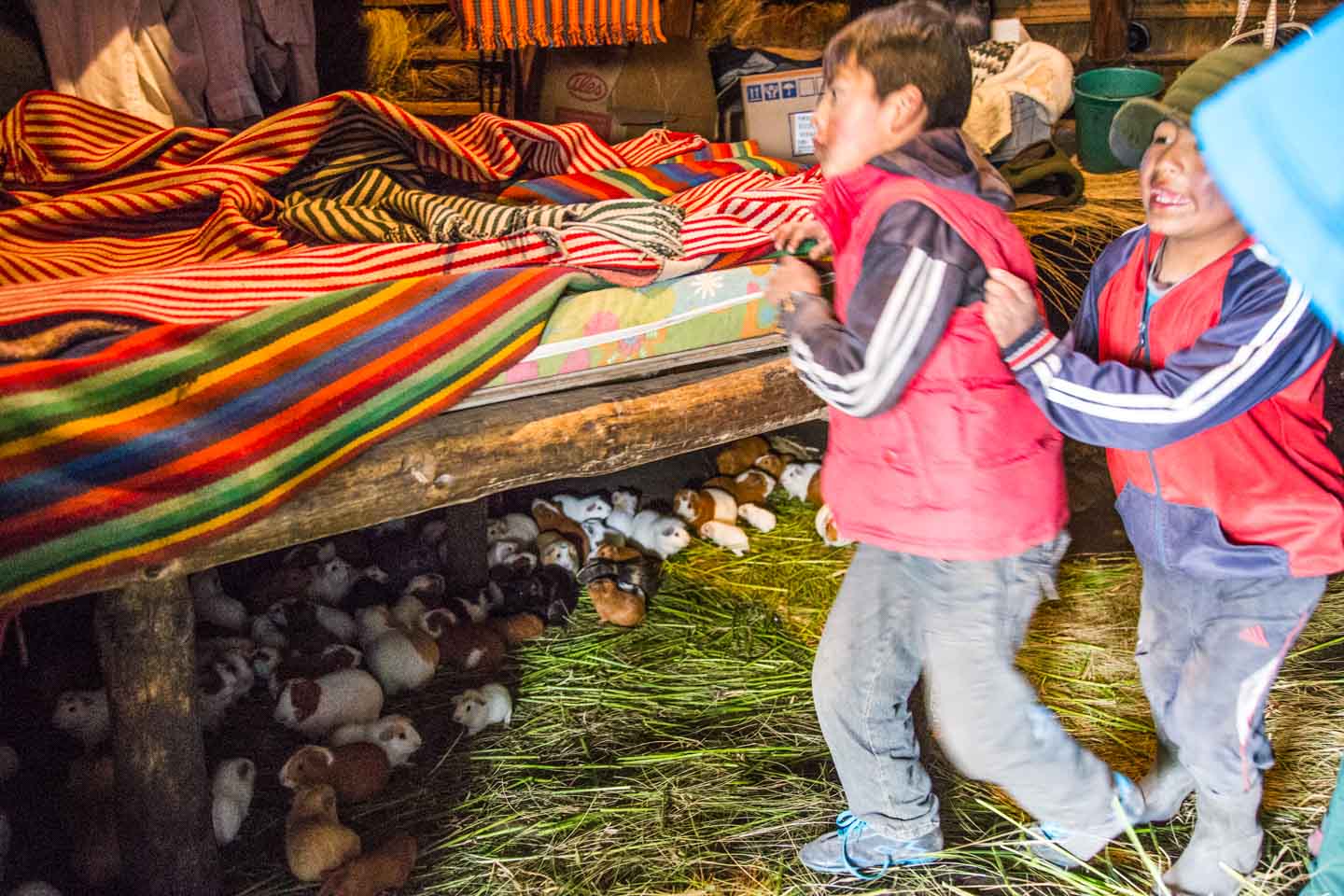
Guinea pig (or cuy as the locals call them) is a local food specialty in Ecuador, and Julian’s family raised them inside their home to sell. We had to watch our step as to not step on one of these little creatures roaming around.
It’s so different from the way most people, especially in cities, live. Life in the highlands is tough, but Julian and his family could not have been more kind and content.
Toachi Canyon / Cañon del Toachi
West of Julian’s house, we took a quick photo break at Cañon del Toachi, a canyon formed by the pyroclastic activity of Quilotoa volcano. We were getting closer and closer to the main attraction!

Quilotoa Rim and Hike
Finally arriving at Quilotoa, we walked along the rim, taking in the impressive view before us. The green walls of the caldera steeply descended 280m (920 feet) to the shimmering water of the Quilotoa lake, which covered the rest of the 3 km (2 mi) wide crater. Occasionally, clouds would make their way above the rim and into the crater.
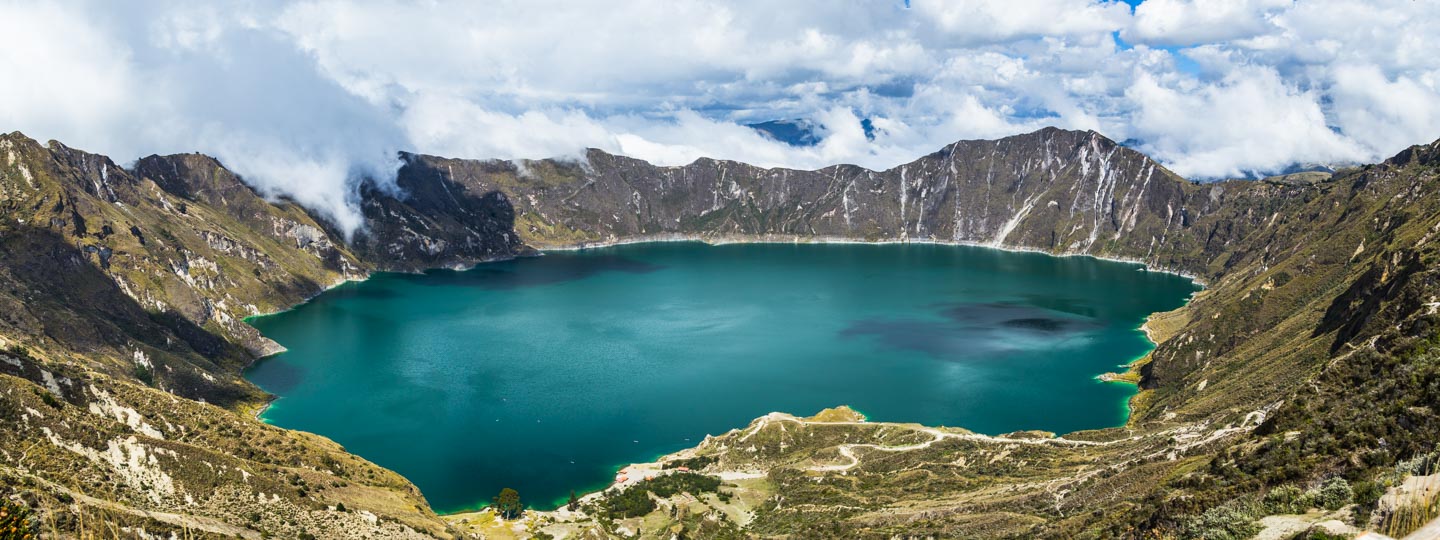
That view alone would have made the trip to Quilotoa worth it, but we had another challenge ahead of us – make our way down to the lake and then back up. Another hike! The way down was pretty easy, less than 30 min from top to bottom, passing by many breathless hikers on their way up.

At the bottom, one could rent kayaks, swim in the cold lake or just spend some time enjoying the view.

What goes down must come up… well, in our case this was true. Armed with the knowledge we had successfully tackled Cotopaxi the day before, we turned around to face the mountain in front of us. Many locals had mules for rent, for those hikers that wanted an easier way back up. We ignored them and trusted our legs to do all the work.
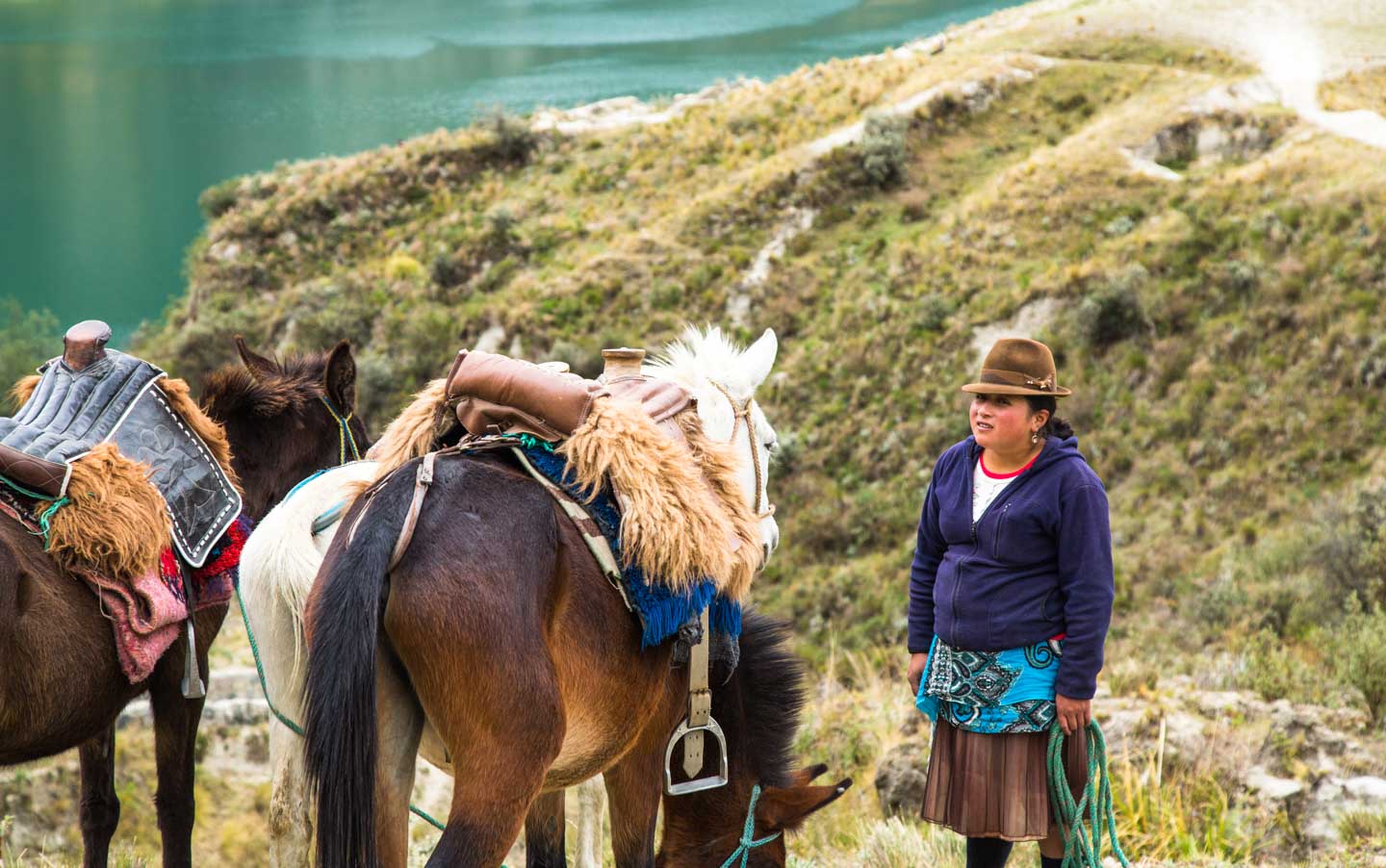
We can’t say we didn’t regret not taking a mule at least a little bit. Similarly to our hike in Cotopaxi National Park, we had to stop and catch our breath shortly after beginning the ascent. It was going to be a long and slow way up, stopping every now and then to breathe. It’s funny how even simple tasks as tying your shoelaces are so physically demanding in high altitude.
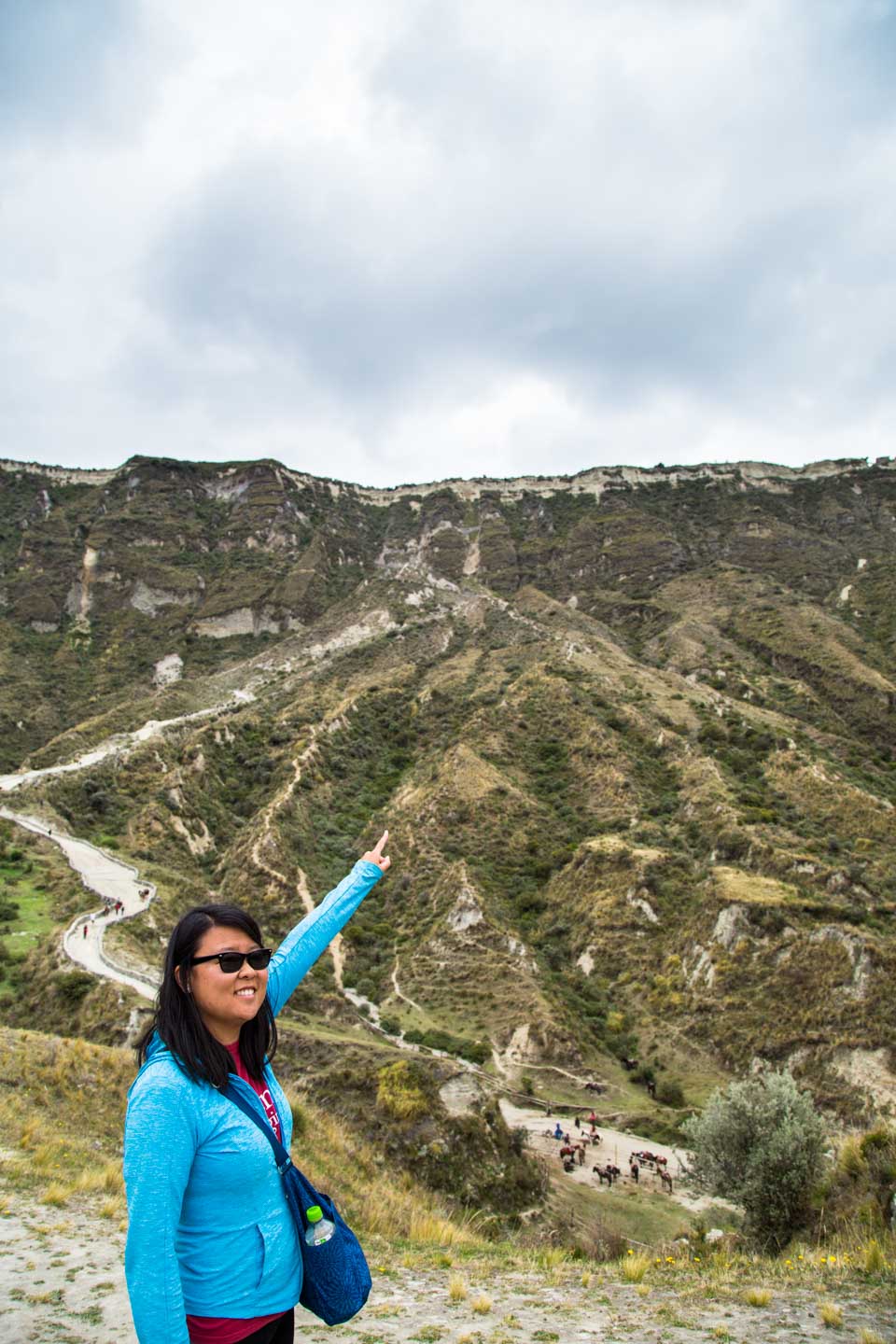
Every now and then a mule-mounted hiker would pass by us, leaving a cloud of volcanic ash up in the air just waiting to be devoured by us. With the sun beating us down and no shade in sight, we started questioning if we should have taken a mule up too.

With the beautiful view of the lake and the thought that we had conquered a 5,000m volcano just the day before, we pushed through. After an hour and a half, we saw the wooden viewpoint at the top of the crater. We had made it back to the top! Now to sit down and breath for a while.
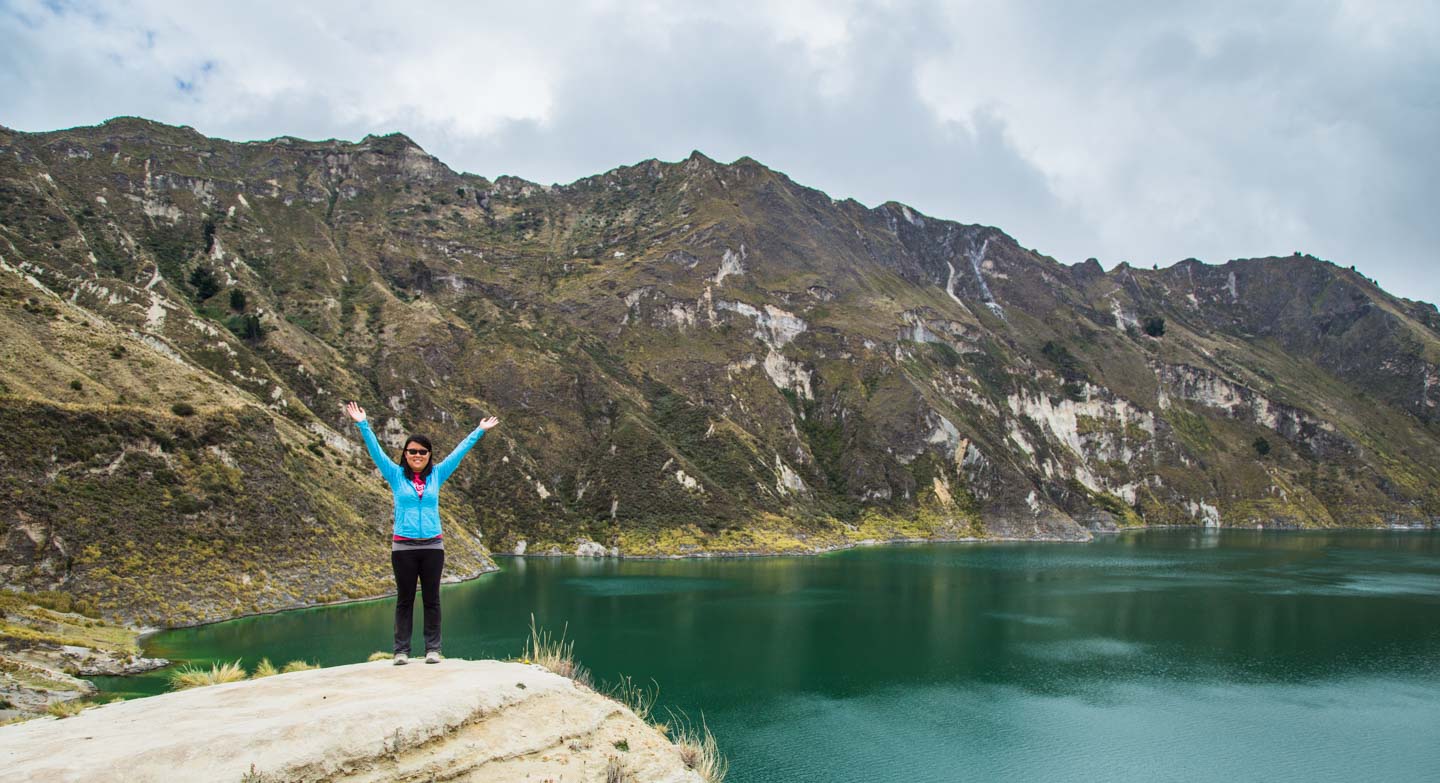
This hike was definitely not an easy one, but highly recommended. The feeling of accomplishment after making your way back up with your own legs was extraordinary. Thanks to the acclimatization we had done the day before, this time we headed back to Quito only with friends and incredible memories, no headaches!
